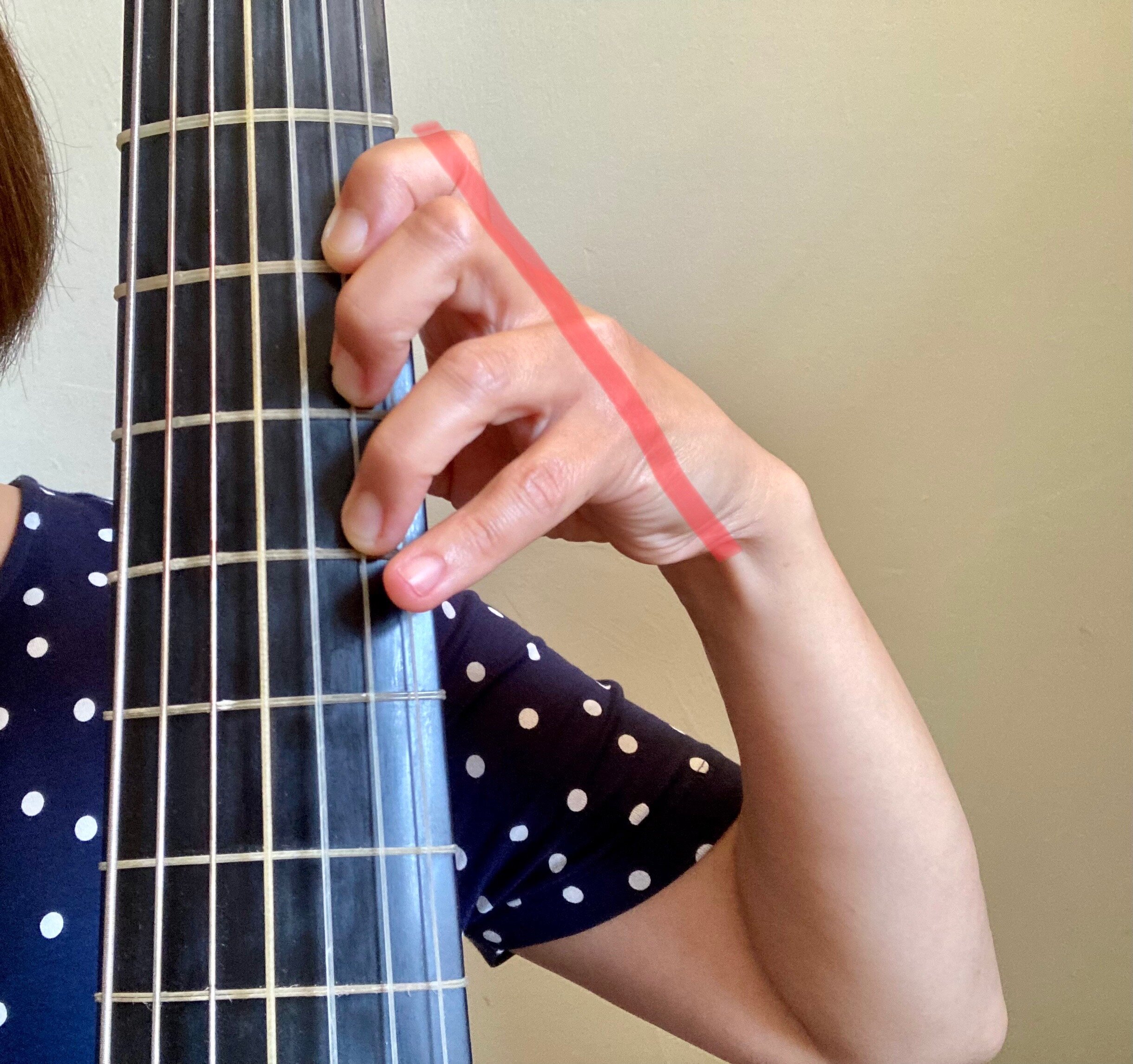A Technique Q&A with Asako
Question:
For players with smaller hands, if playing in a key which requires the first finger on the first fret eg. D minor or F major but where the piece requires fourth finger extension ( to avoid the use of open strings for example) is it better to have the hand positioned with the first finger on the second fret and extend back, to more easily enable the accurate placing of the fourth finger? Or should I just get used to shifting more frequently than players with a bigger stretch?
(question from Pauline Hinchliffe)
Asako Answers:
For small hands on bass viol, reaching the 5th fret with the 4th finger from the 1st fret is hard work, especially when we play in a key which needs the 1st fret frequently. Jumping around on the fingerboard to reach the 1st or 5th fret is not particularly elegant to look at and it can make it difficult to create smooth phrases.
If you have this hand position (see photo 1 below) you are likely having this problem.
Photo 1
The 4th finger is the weakest finger, therefore we need to have a better hand position to support it.
Finding a better hand position
For example; using the 3rd string.
Place your 4th finger on the 5th fret, E string (A), make sure you have a comfortable hand position for your 4th finger.
Keep the 4th finger down in the comfortable position then place the 3rd finger on the 4th fret (note G#)
Keep the 4th and 3rd fingers down and add the 2nd finger on the 3rd fret (note G)
Keep the 4th, 3rd and 2nd fingers down and add the 1st finger on the 2nd fret (note F#)
Photo 2
5. Keep the 4th, 3rd and 2nd fingers down and place the 1st finger on the 1st fret (note F)
Photo 3
6. Repeat 4 and 5 (the 1st finger is much more flexible than the 4th finger. This movement of the 1st finger going between the 1st and 2nd fret is very useful. You might find that you are not using the middle of the finger tip on your 1st finger but the outside edge - that’s fine, we all have a bump on that corner!)
Now you have discovered the position where you can comfortably place your 4th finger. The knuckles are or more less parallel to the fingerboard (compare photo 1 the hand position which is problematic and photo 2) and the fingers are evenly placed to reach the notes.
Photo 1
Photo 2
When you play music, there are many different possible hand positions you can use. You should choose which one to use at any given moment based on practical or musical reasons. The position I’ve demonstrated here here is only one of the possibilities. You can try this position if you have trouble reaching with the 4th finger or can’t make a good sound with the 4th finger. Be flexible though - there might be a better solution for ‘your’ hand.
The open string has a naturally brighter sound, especially on the top string. If you have to use it for some reason instead of a stopped note, it is not end of the world. You can be very careful to create the sound you’d like by not hitting the string too hard with your bow, playing with a slower bow or using less bow hair, etc.
Asako





